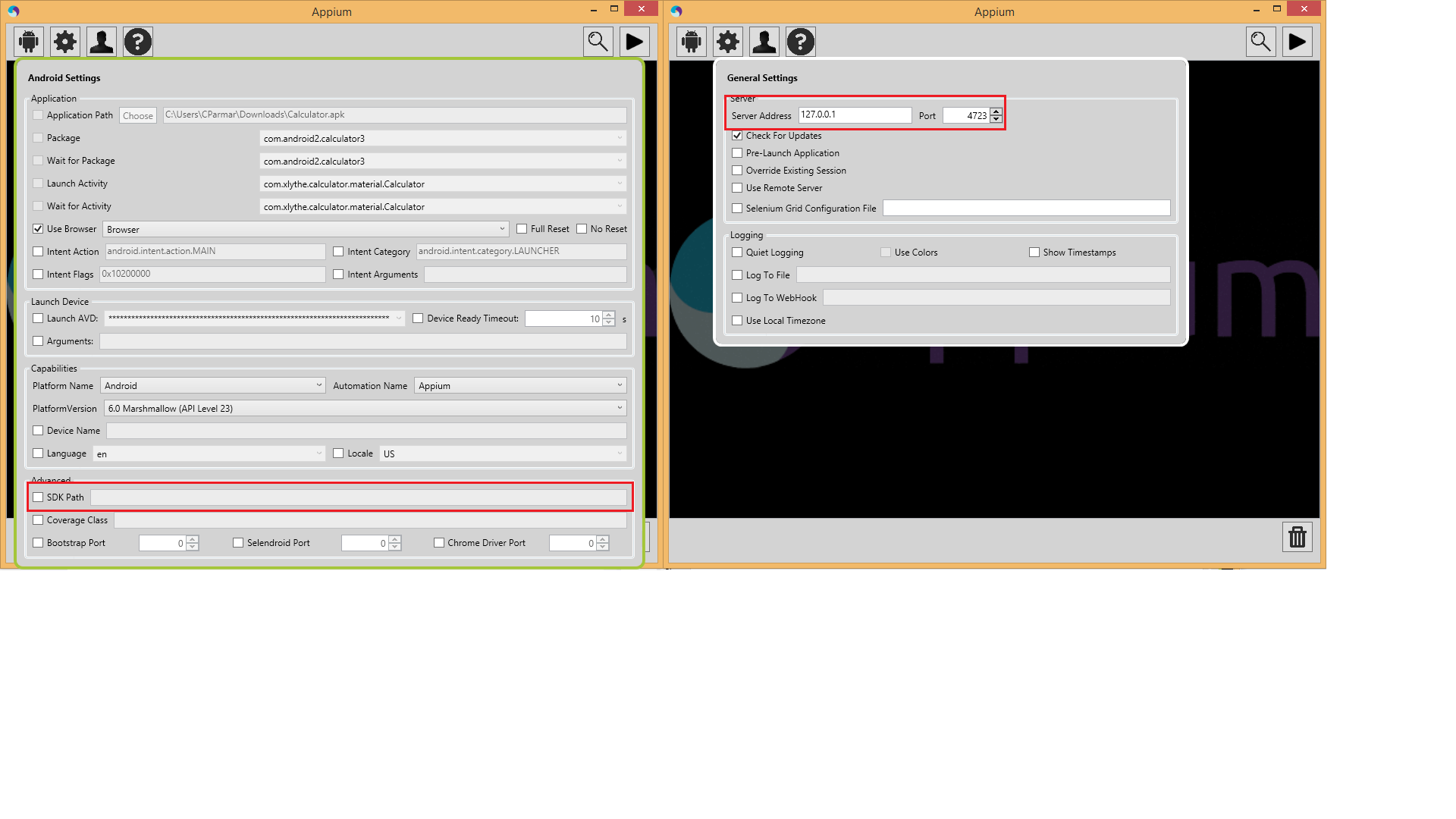
There exists a hardware accelerated emulator for Android it has it's own.You must supply the -no-reset or -full-reset flags for.On Windows run Appium.exe as an administrator, or when running from source you need to run cmd as an administrator.See the server documentation for all the command line arguments. (see the Windows app testing doc for instructions on how to run Windows app tests) Running Appium To test a Windows app, simply make sure you have turned developer mode on.Your test script should ensure that the platformVersion capability corresponds to the emulator or device version you are testing, and that the app capability is an absolute path to the.Then run Appium on the command line (via the appium command) To run tests on Windows, you will need to have the Android Emulator booted or an Android Device connected that is running an AVD with API Level 17 or greater.Add the path you used for M2 to your PATH. Set M2_HOME to the directory maven is installed in, and set M2 to the bin in that directory. Install Apache Maven and set the M2HOME and M2 environment variables.Be sure to add the folder containing Ant to your PATH variable. Install Apache Ant or use the one that comes with the Android Windows SDK in the eclipse\plugins folder.Set the ANDROID_HOME environment variable to be your Android SDK path and add the tools and platform-tools folders to your PATH variable. The bin in that directory should be added to your PATH variable.

Download the latest Java JDK here (accept the license agreement first).Follow the directions below for setup for either Android or Windows app testing.To start Appium, you can now simply run appium from the prompt.Run the command npm install -g appium which will install Appium from NPM.The npm and nodejs paths should be in your PATH environment variable. Download latest node and npm tools MSI (version >= 6.0).See Windows App Testing for more details.

Appium on Windows supports both Windows and Android app automation!


 0 kommentar(er)
0 kommentar(er)
